In the first two parts of the Austrian air force review, we explained that both the fighter and fixed wing transport components are relatively small. However, looking at the rotary wing force, the air arm has a credible and versatile capacity. Currently, four different types of helicopter are in service. However, in a couple of years, additional UH-60 Black Hawks and AW169 Lions will allow retirement of the AB212s and OH-58 Kiowas. This will ease logistics, maintenance and training significantly.
Text and photos: Emiel Sloot
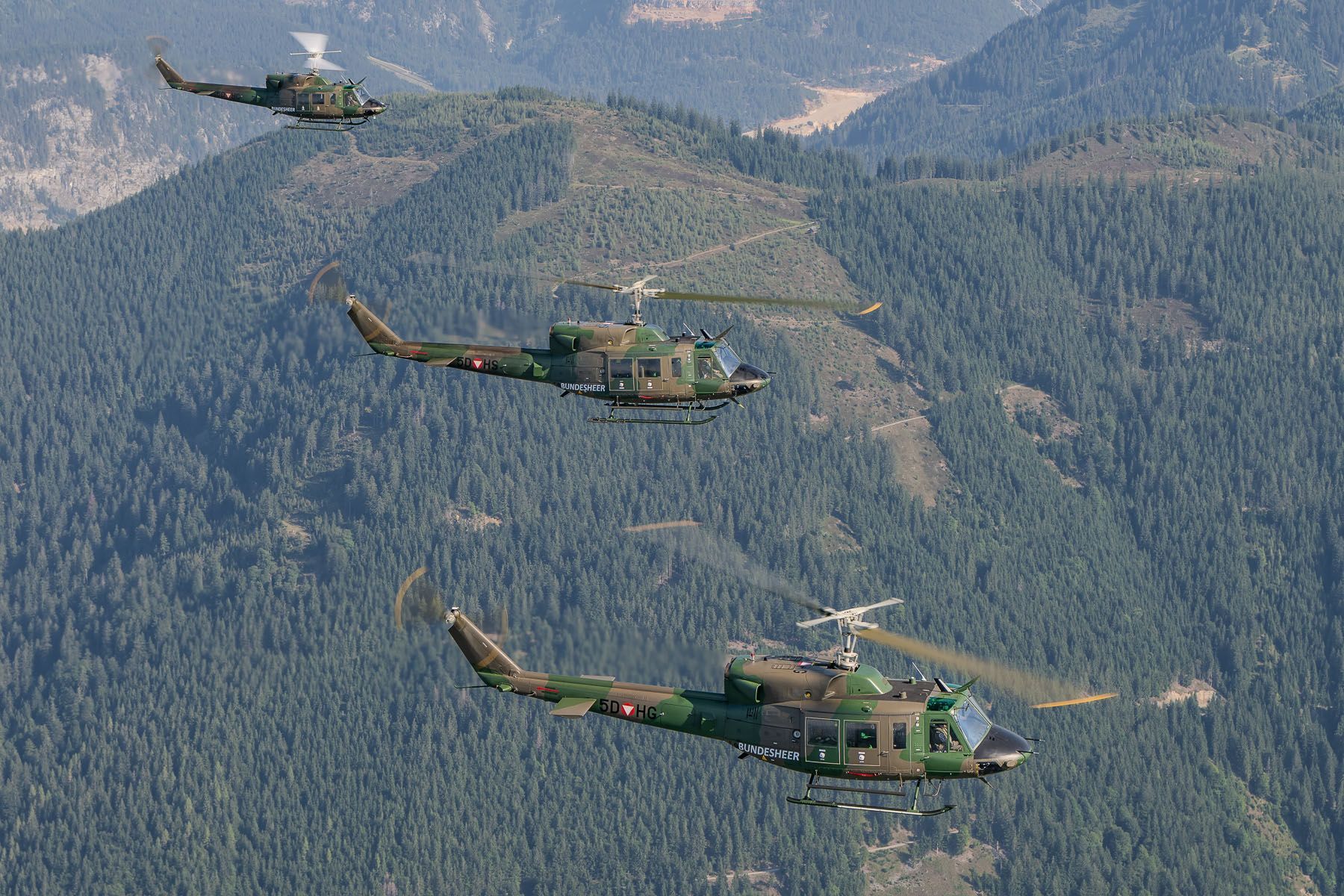
Black Hawk fleet expansion
After a series of devastating avalanches in 1999, it turned out that Austria was rather dependent on foreign assistance for air support. German-based US Army UH-60s, German UH-1Hs and CH-53Gs as well as a Swiss Air Force AS332 Super Puma all flew in to help with the rescue and evacuation efforts. The lack of own assets directly lead to the intention to buy suitable helicopters to handle the job in the future. Following an evaluation of both the Eurocopter AS532 Cougar and the Sikorsky Black Hawk resulted in an other for the latter. The contract for nine Sikorsky S-70A-42 Black Hawk helicopters was signed on 29 December 2000. Deliveries to Fliegerhorst Brumowski at Langenlebarn started in August 2002 and were completed in 2003. The locally based Agusta-Bell AB212 then relocated to Fliegerhorst Vogler at Linz-Hörsching.
Within the Austrian air force, the various helicopters types have several roles in common although the size and capacity vary. As such, the Black Hawks are used for the transport of passengers/troops and material, rescue and recovery missions as well as medical evacuation and transportation duties.
The S-70 can normally carry up to 20 persons – even 25 in an emergency situation – or some four tons of payload. The range of 500km can be more than tripled to 1,600km with the addition of external fuel tanks. The crash-resistant crew seats are armoured, and other protection equipment include chaff/flare dispensers, electronic counter measures and an infrared jamming system. Both main and tail rotor blades have an anti-icing system to cope with alpine and cold weather conditions. The Black Hawks are operated by the Mittlere Transporthubschrauberstaffel (Medium Transport Helicopter Squadron) at Fliegerhorst Leopold Figl – Flugplatz General Pabisch (formerly Fliegerhorst Brumowski) at Langenlebarn.

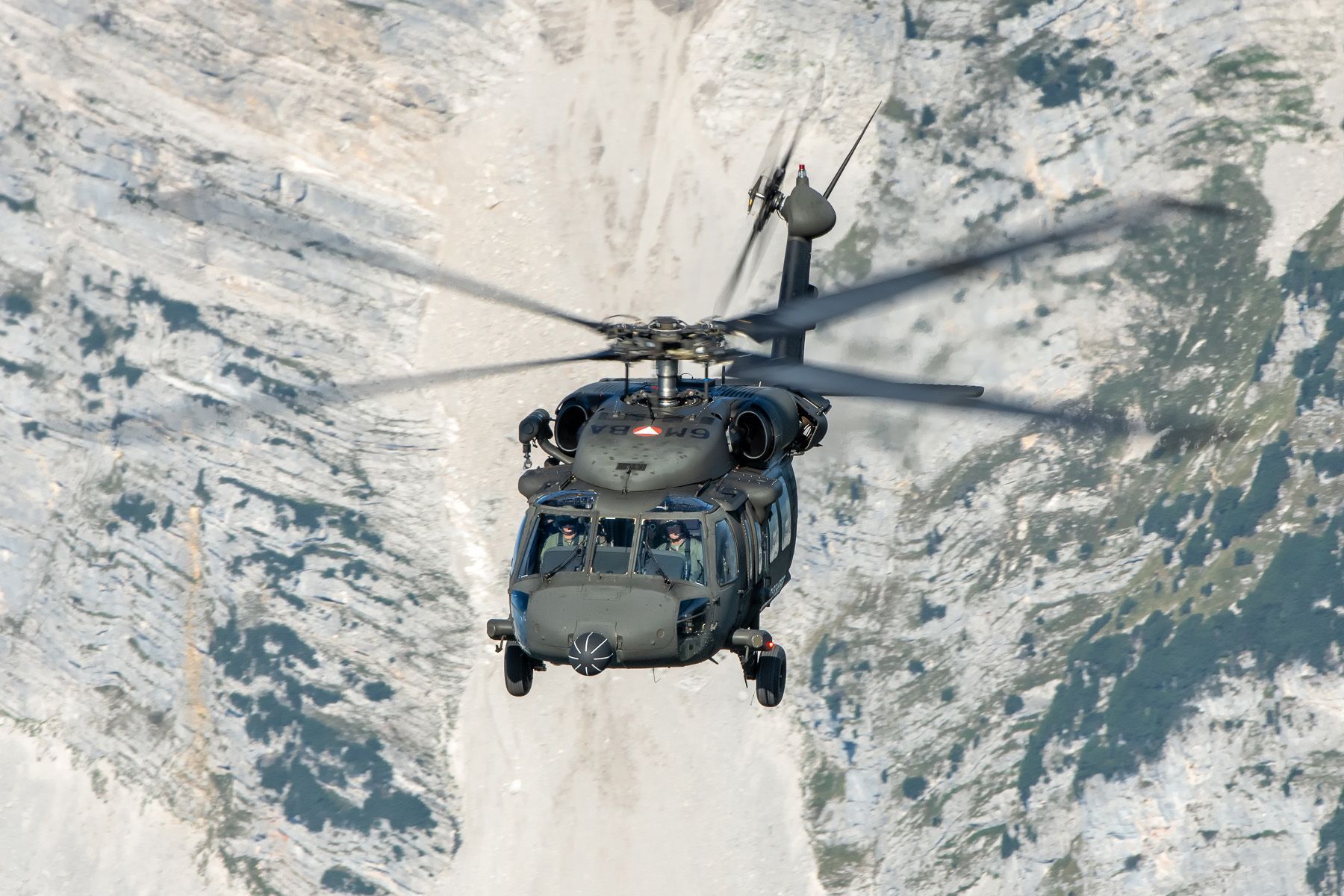
ACEHAWK upgrade
An avionics upgrade programme worth US$40 million was awarded to Ace Aeronautics in Alabama, US on 1 June 2017. The upgrade kit called ACEHAWK is based on the Garmin G5000H Integrated Flight Deck. Four 12-inch 4K UltraHD displays were installed along with two touchscreen controllers, all compatible with NVIS (Night Vision Imaging Systems). The system furthermore included ADS-B, TCAS II, a weather radar and a fully integrated Flight Management System. Also a Thales day/night Scorpion Helmet Mounted Display was added. The first modified Black Hawks have meanwhile returned into service.
Three second-hand UH-60L Black Hawks were obtained from the Royal Jordanian Air Force in 2019. Before delivery, Ace Aeronautics will upgrade these in a similar way as they are taking care of the nine S-70s. After completion, these will augment the fleet. The first two were airlifted to the US on 17 May 2021.
As the Austrians are clearly content with these helicopters, more Black Hawks were sought. On 29 May 2024, the US State Department approved a Foreign Military Sales package of 12 UH-60M helicopters, plus training, support and spares. On 30 June 2024, the contract worth €715 million was actually signed. Deliveries are expected to start in 2028 and will arrive at Fliegerhorst Vogler, Linz-Hörsching as a replacement for the Agusta-Bell AB212. The UH-60M will be used for the same tasks as the S-70, with additional roles in deploying paratroops and special operations forces, and aerial fire-fighting.

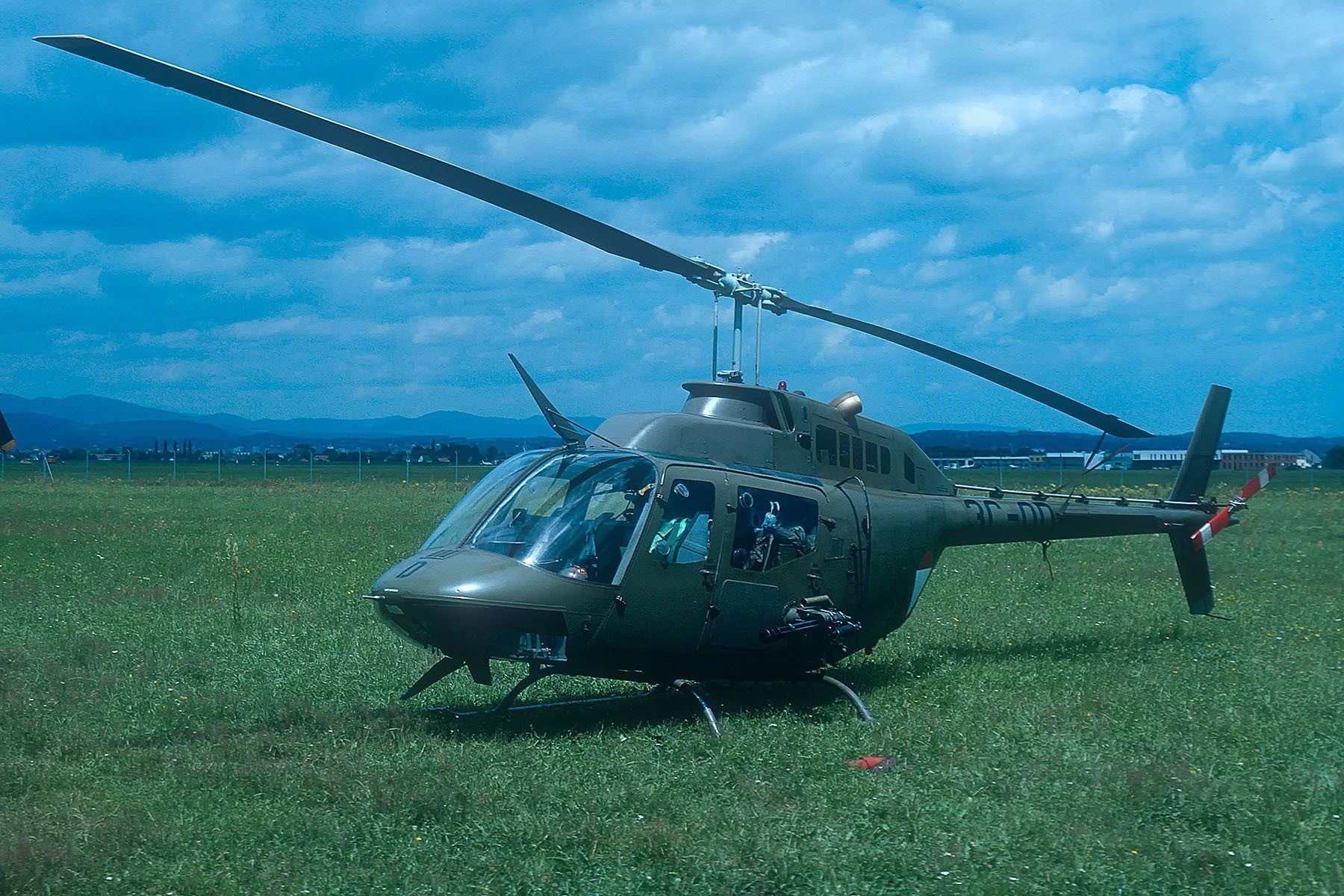
Armed Kiowa scouts
Operating out of the same base as the S-70s are the Bell OH-58B Kiowa scout helicopters of the Mehrzweck-Transporthubschrauberstaffel (Multi-Role Transport Helicopter Squadron). Both these helicopter squadrons as well as the Flächenstaffel (Fixed Wing Squadron) that operates the Pilatus PC-6 Turbo Porters are part of the Langenlebarn-based Luftunterstützungsgeschwader (Air Support Wing), on its turn reporting to the Kommando Luftunterstützung (Air Support Command) at Linz-Hörsching.
Twelve Kiowas were delivered in crates in two batches on 14 June and 26 September 1976, respectively. After reassembly, the first one flew on 22 June 1976. The type was not entirely new, as the Austrians had already operated the Agusta-Bell AB206A Jet Ranger – the Kiowa’s civilian counterpart – from 1970. At present, ten Kiowas are still operational. Two have been written off after accidents on 27 February 1992 and 17 June 2014, respectively.
The single-engined OH-58B can be armed with a port side-mounted 7.62mm M134 mini-gun. In this configuration, it serves armed escort and liaison purposes for transport convoys. It furthermore conducts border surveillance flights when required.
Currently being the only armed helicopter type within the Austrian armed forces, replacement is foreseen for not later than 2030, when a second batch of Leonardo AW169MA Lions should have become operational, allowing the remaining Kiowas to retire from service for more than half a century.
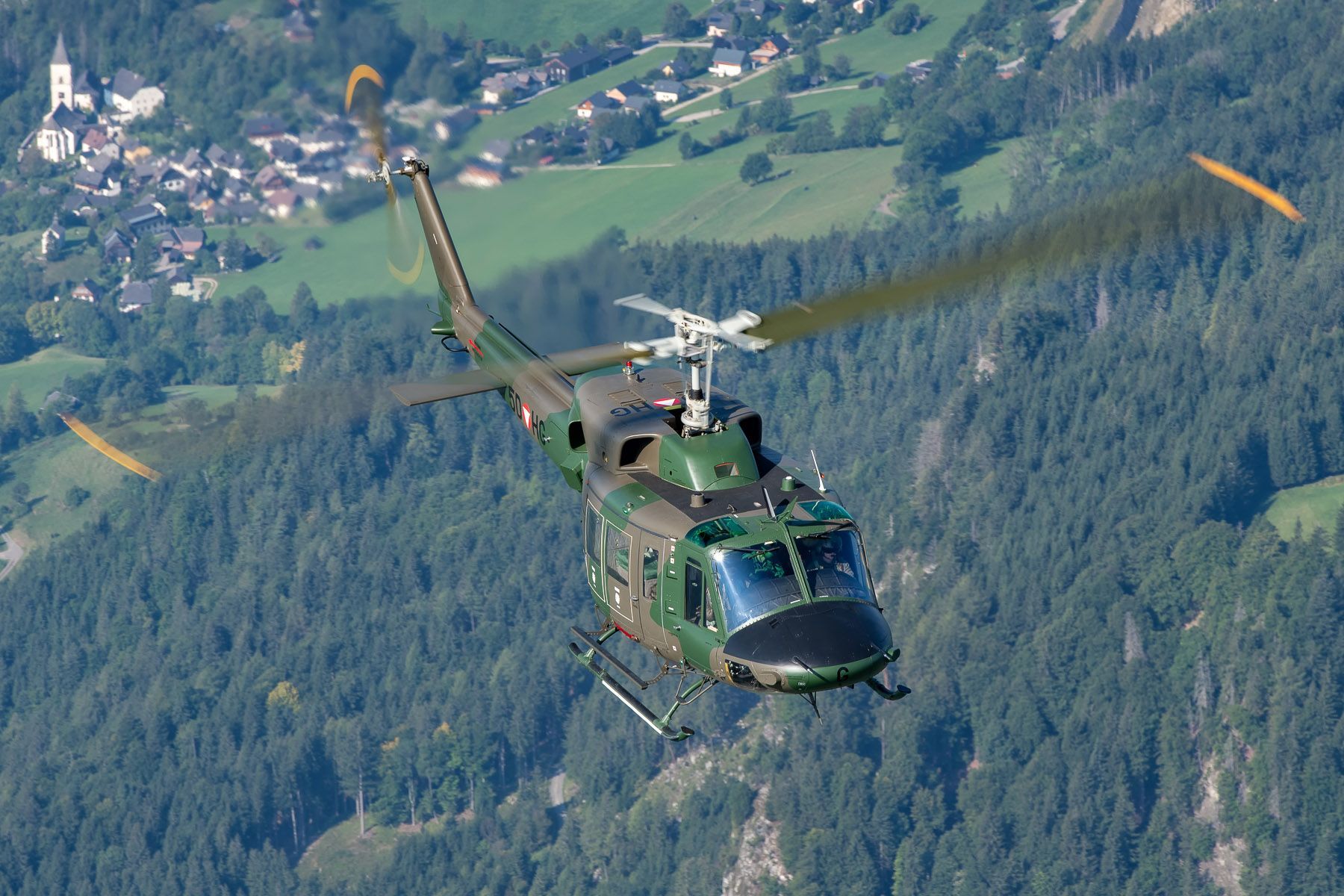
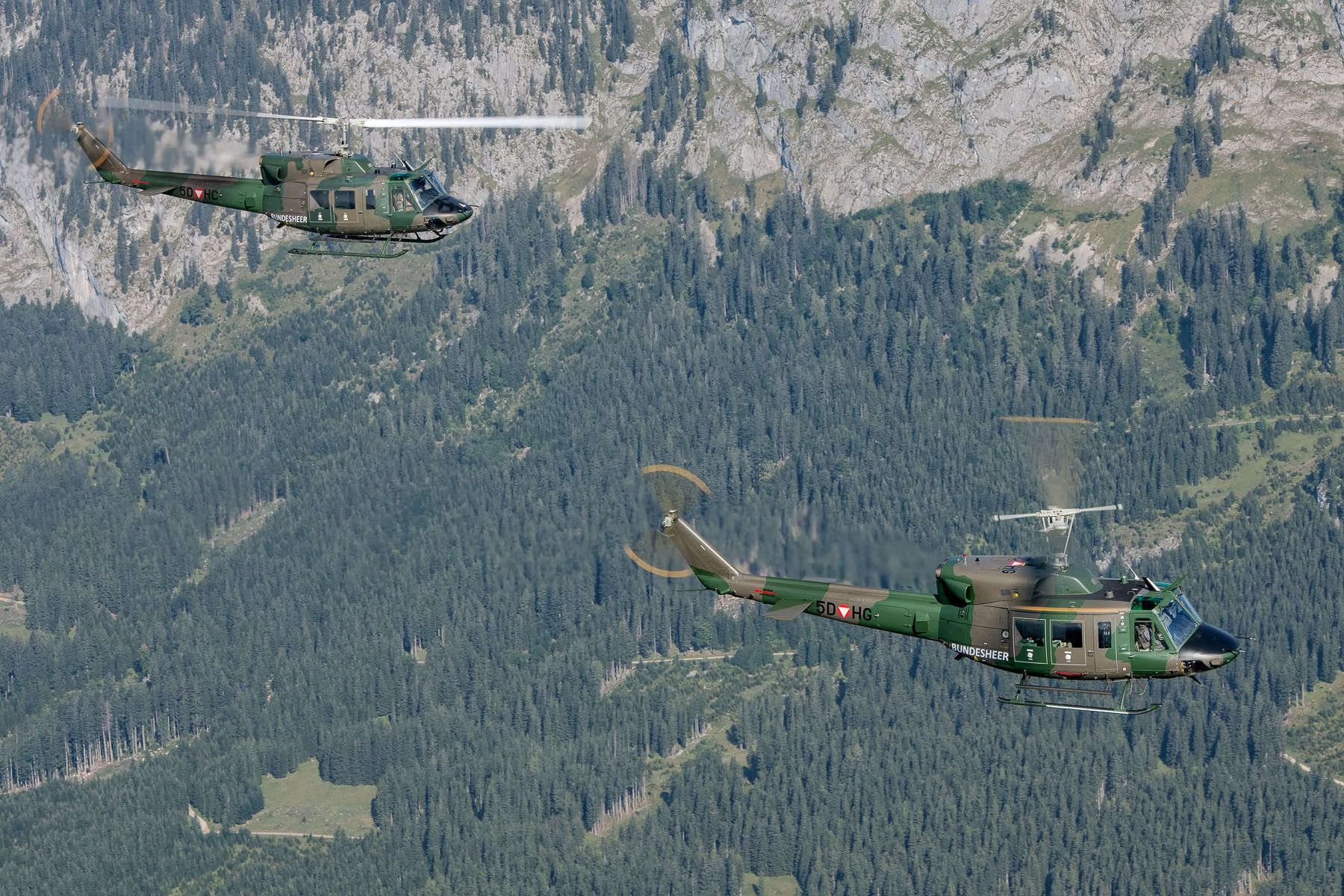
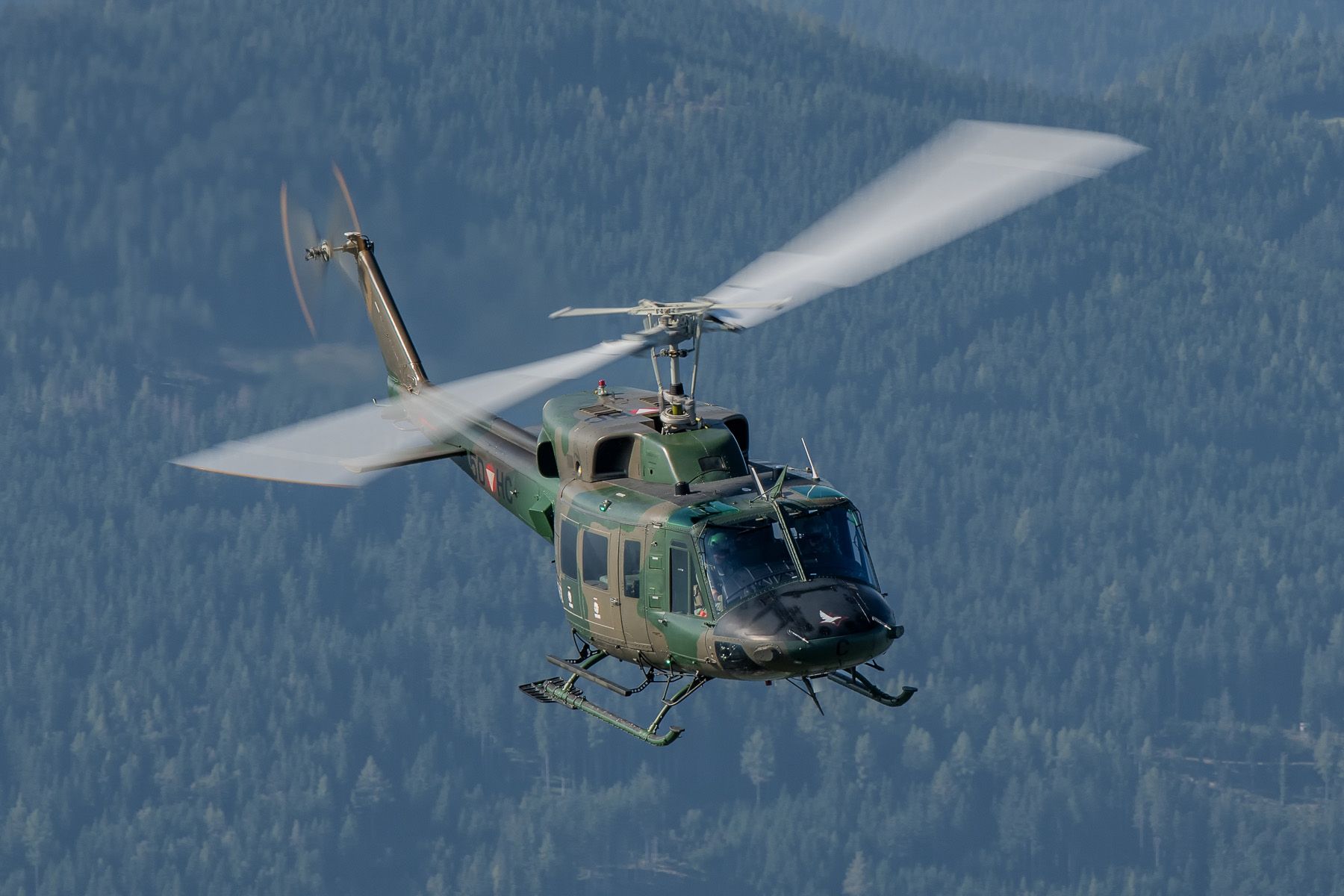
Agusta Bell’s versatile workhorse
In service for almost as long as the Kiowa is the Agusta-Bell AB212, the Italian-built version of the Twin Huey. The 24 originally ordered AB212s entered service in 1980 and 1981, and equipped two squadrons at Linz-Hörsching and Langenlebarn, respectively. Following the arrival of the earlier mentioned S-70 Black Hawks, all AB212s were concentrated at Fliegerhorst Vogler at Linz-Hörsching.
With a large variety in configurations, the AB212 is a real workhorse. A maximum of 14 people can be taken on board including a dozen paratroops. A hook mounted under the fuselage can carry underslung loads, including a 900-litre water bucket that can be filled in only 15 seconds for aerial fire fighting. For evacuation missions, three stretchers along with seven seated persons can be carried, while a winch can be attached for rescue purposes. Alternatively, a mobile SINTRA (Siemens Intensivtransporttrage) intensive care unit can be installed in 15 minutes. One specific AB212 (serialled 5D-HU) is fitted for geophysical measuring flights.
Several mechanical components have been renewed in the early 2000s to extend the lifespan of the airframes. A €70 million mid-life update (MLU) programme was planned between 2010 and 2015. This resulted in a new three-display glass cockpit, enabling NVIS operations with helmet-mounted displays. Also a missile warning system and a radar warning receiver were added. The first modified AB212 was handed over on 6 November 2013.
Of the 24 originally delivered AB212s, four were lost in various accidents on 4 July 1981, 1 October 1997, 20 March 2000 and 19 October 2023. To compensate for the first three losses, two additional helicopters were acquired as replacements, one of these being a US-built Bell 212.
All 22 remaining 212s are operated by two Leichte Transporthubschrauberstaffel (Light Transport Helicopter Squadron) both based at Fliegerhorst Vogler and reporting directly to the Kommando Luftunterstützung. From 2028, these will be replaced by 12 UH-60M Black Hawks ordered in 2024, most probably grouped within a single squadron.
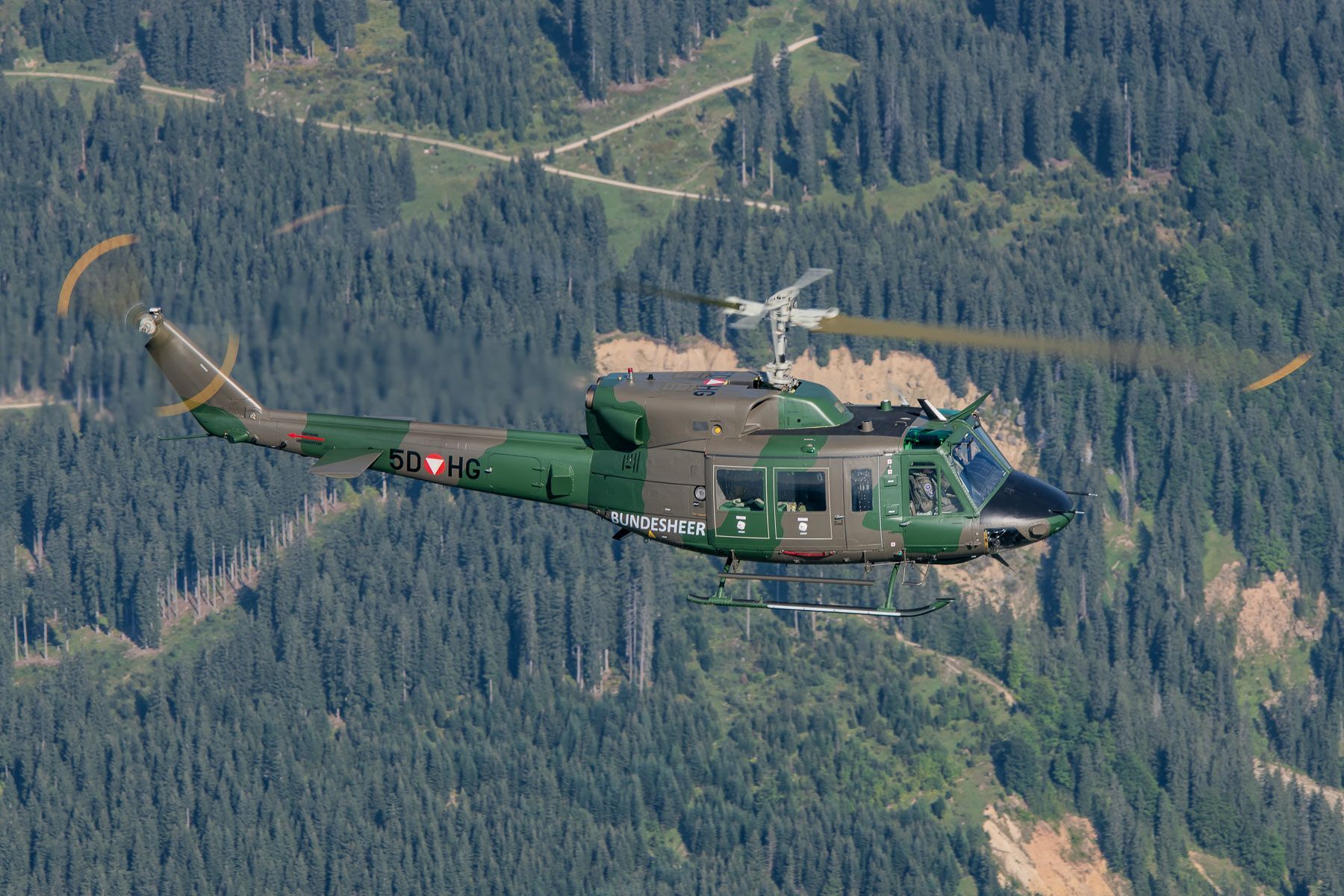
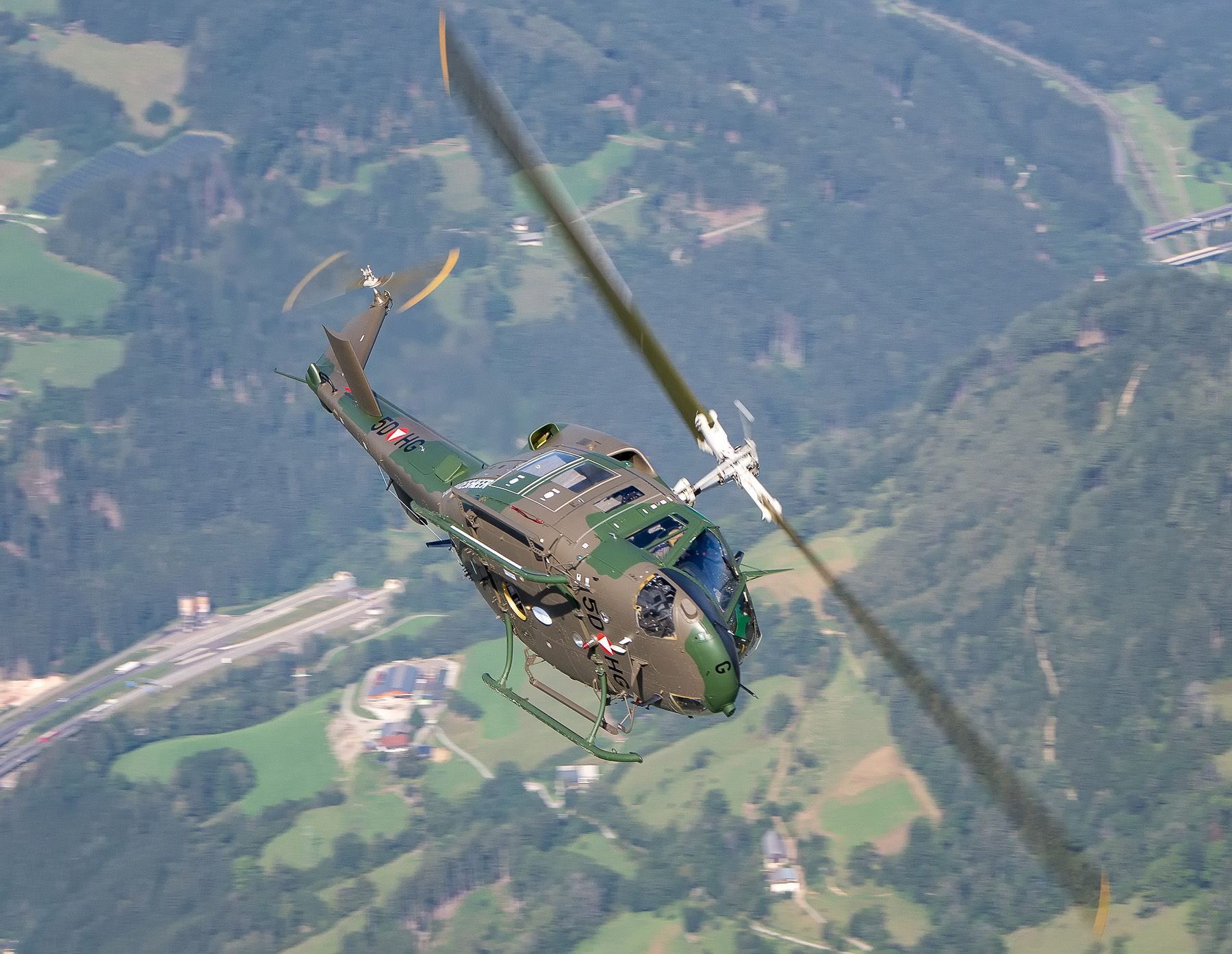
New kid on the block
In 2024, Austria took their last couple of Alouette IIIs out of service. The first of these oldies were taken on charge back in 1967. To replace these, a contract for 18 Leonardo AW169 Lion helicopters was signed on 12 January 2022, a deal worth €346 million. Six are in the basic B variant for training, the other twelve are AW169MA Multirole Advancedplatforms. The first AW169B was delivered on 21 December 2022 and deliveries of this particular batch should be completed by 2026. The modern AW169 is notably larger than the Alouette. Powered by two FADEC-controlled Pratt & Whitney Canada PW210A engines, the helicopters are fully NVG-compatible. The large windows offer an unobstructed view for the crew, while the large sliding side doors enable rapid entry and exit by up to ten equipped troops from the cabin. The AW169 does not come with a full ice protection system (FIPS), as the attempt to integrate this system with support of the Swiss air rescue organisation REGA was unsuccessful and therefore abandoned. As an alternative, an ice rate meter is installed that indicates the rate of ice accumulation during flight.
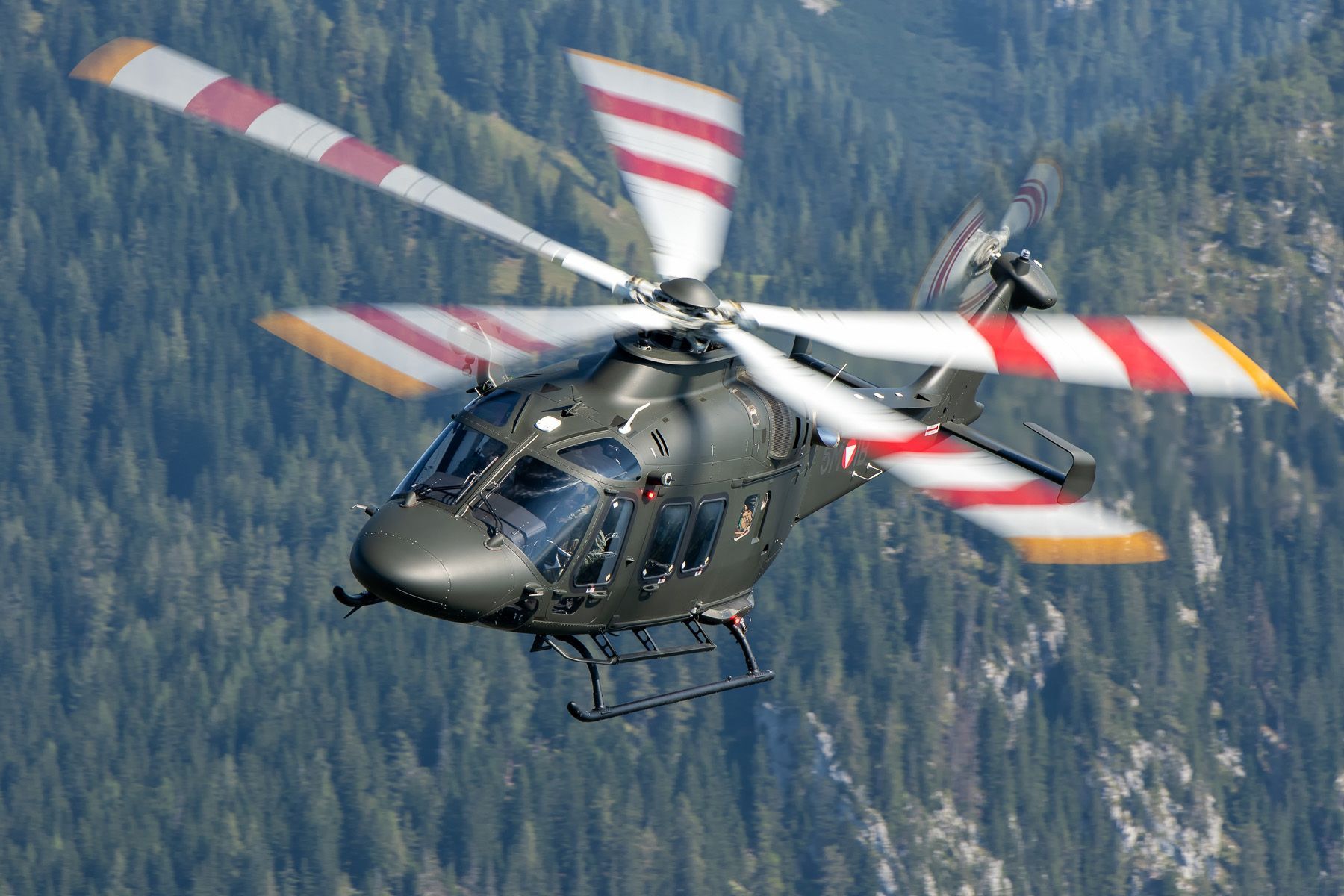
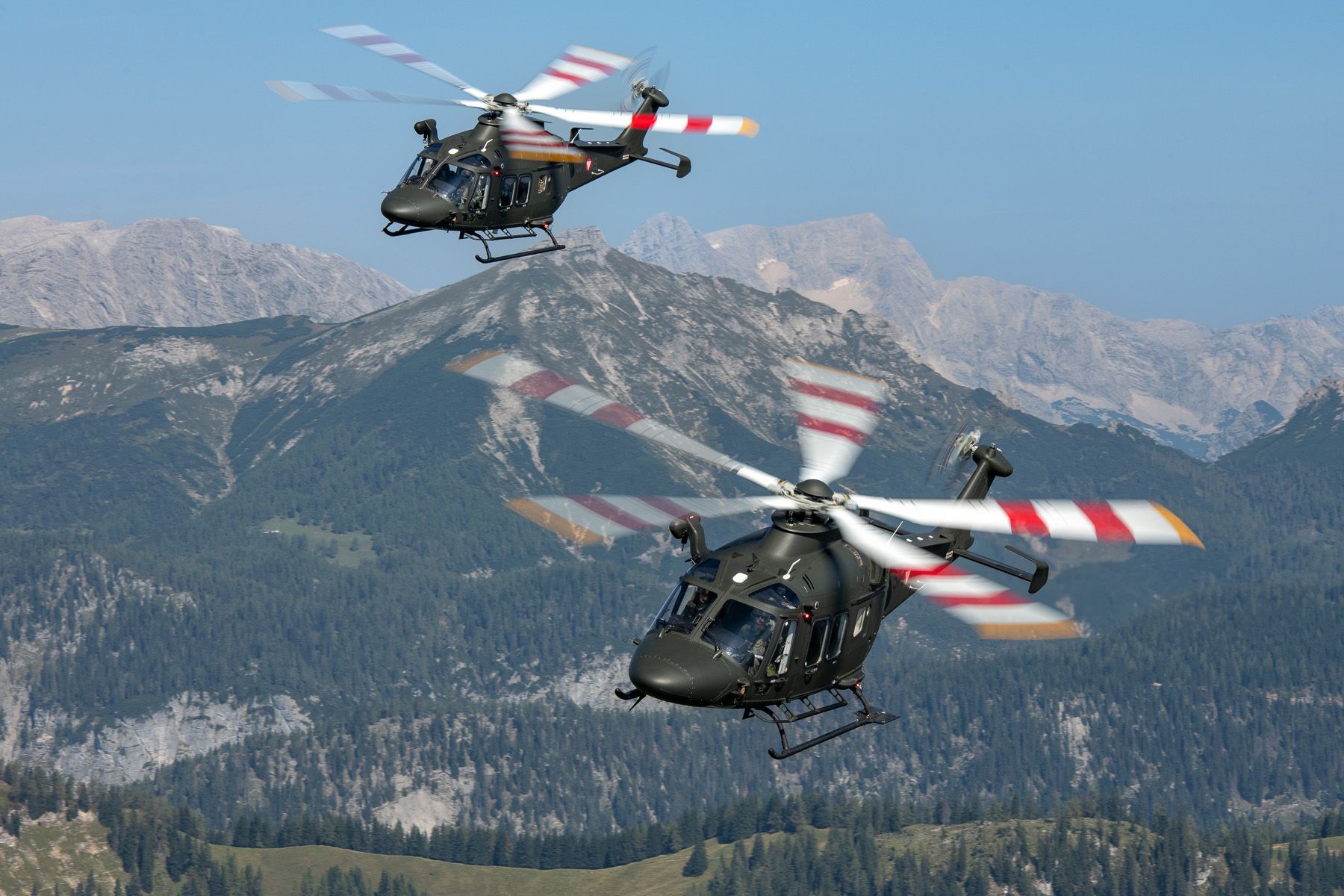
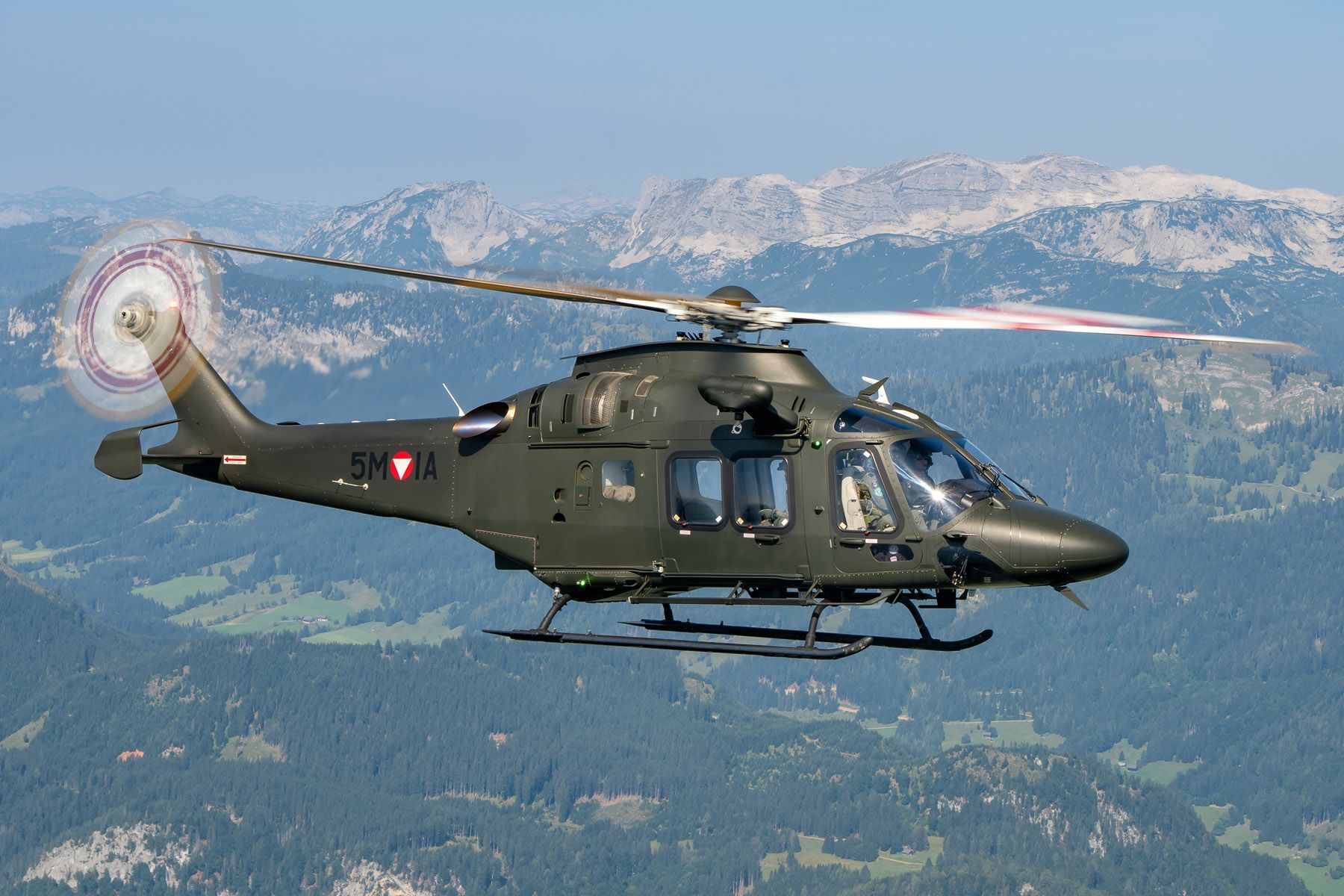
Option confirmed for extra AW169s
The option for 18 additional AW169s was confirmed by the end of 2022 in a follow-up order worth €304 million and signed on 18 January 2023. The break-down for this batch is equal to the first one: six -B and twelve -MA variants. The last of these are planned to arrive by 2028. In view of arming the helicopters, the Mission Equipment Package (MEP) for the Austrian AW169MA will include a FN Herstal 12.7mm cannon pod with 400 rounds, and a 7-tube rocket pod capable of firing both guided and unguided rockets. The weaponised Lion helicopters will replace the Kiowa in the armed combat support role, and also able to carry out troop transport, special operations forces operations and armed reconnaissance.
When deliveries are complete, it is planned to base all AW169Bs at Langenlebarn for training along with a dozen AW169MA in multi-purpose roles. The other twelve AW169MAs will be based at Fliegerhorst Fiala Fernbrugg at Aigen-in-Ennstal with the Mehrzweckhubschrauberstaffel (Multi-purpose Helicopter Squadron). This squadron directly reports to the Kommando Luftunterstützung at Linz-Hörsching and maintains a small detachment at Vomp near Schwaz in Tirol. ■
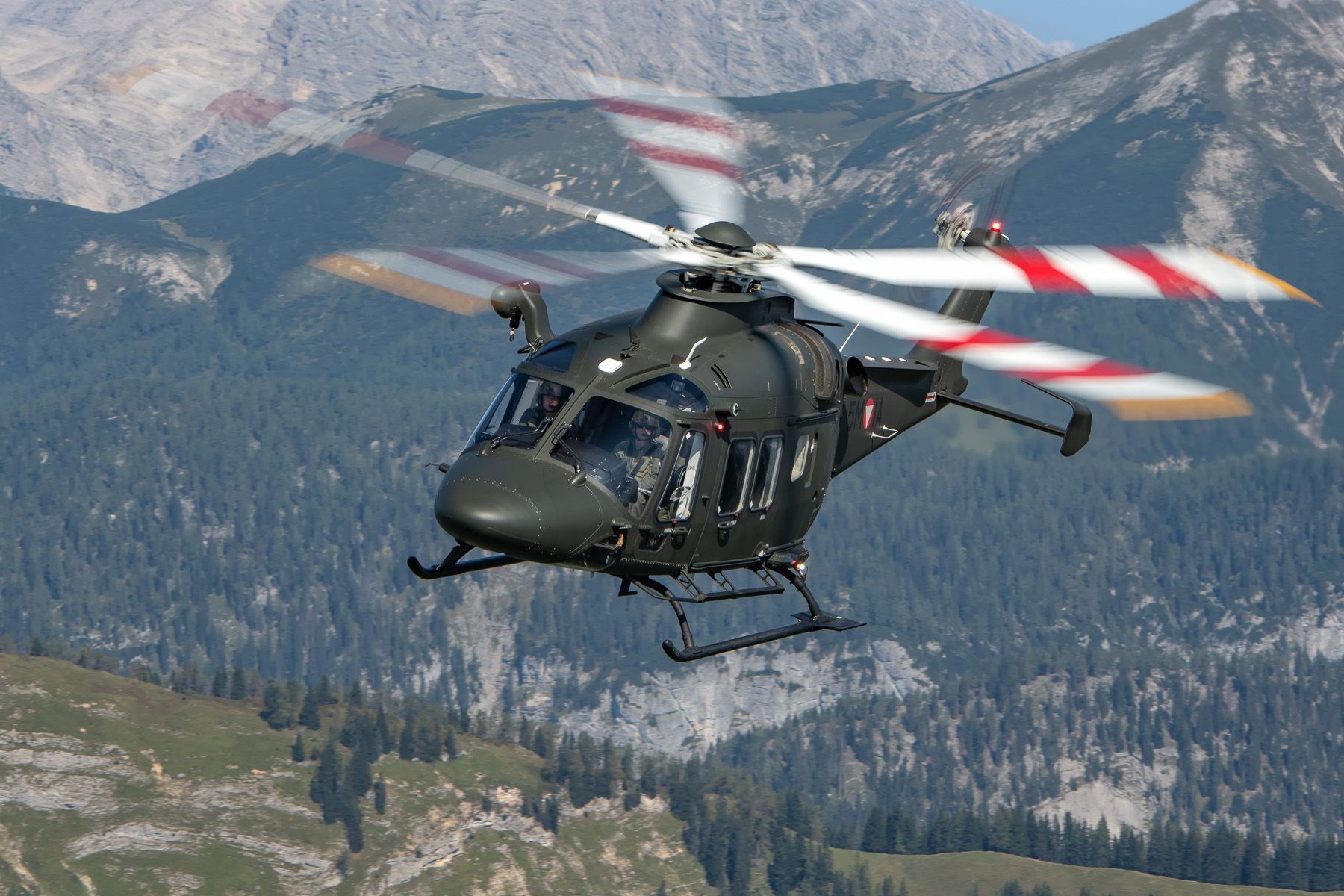
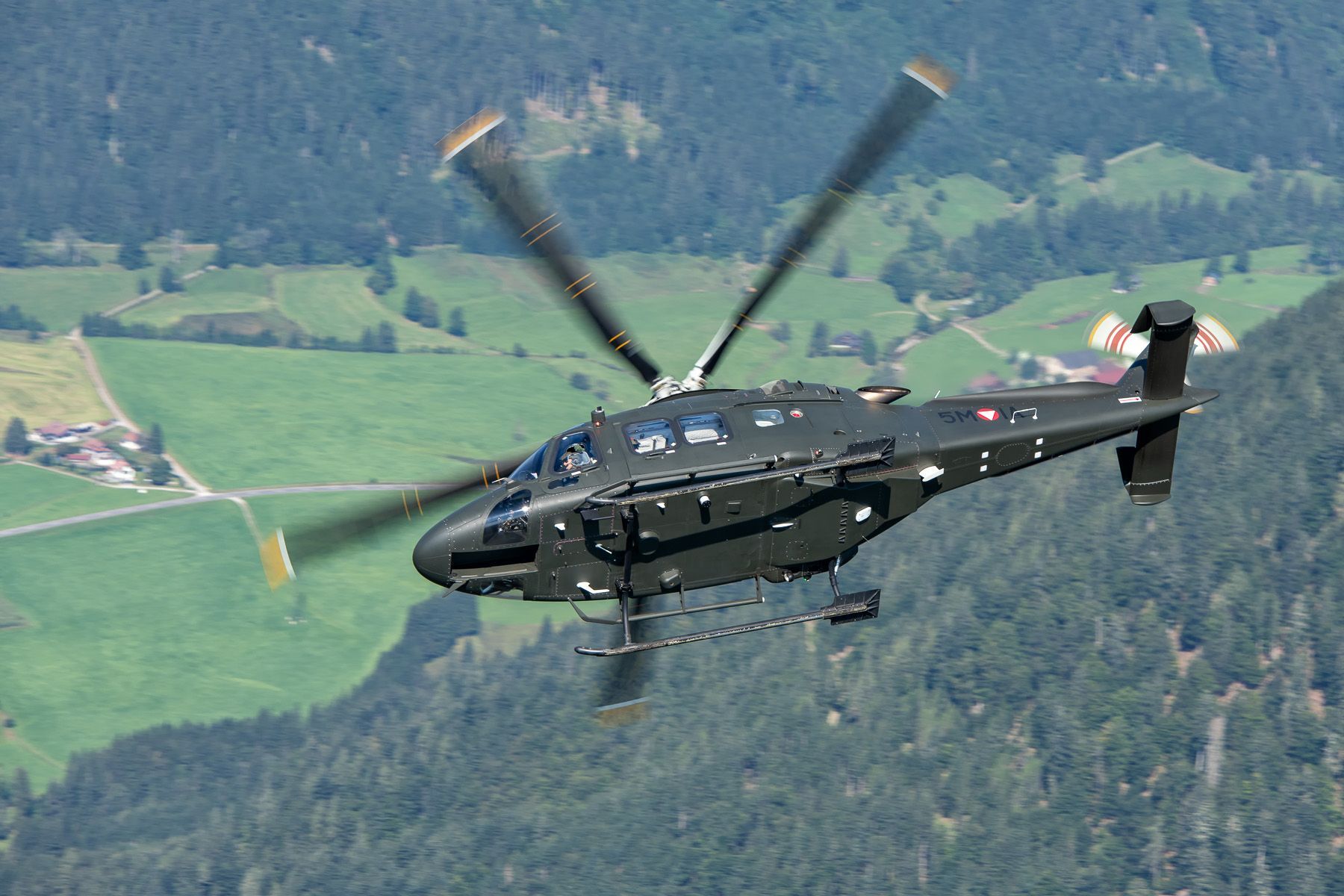
A brief historical overview on Austrian military helicopters
Rotary wing operations started with the arrival of a single Bell 47G2 in 1956, quickly followed by nine Italian-built AB47G2s the same year. Expansion of this type’s fleet occurred in 1960 by 17 Bell OH-13H Sioux helicopters. While the (A)B47s were disposed of in 1969, the OH-13s remained in service until 1976.
In 1958, the helicopter force was expanded with 10 Westland WS-55 Whirlwind Series 2 and 16 Sud-Est SE3160 Alouette IIs, serving until 1965 and 1975, respectively. With the introduction of the Agusta-Bell AB204B in 1963, a more versatile, multi-purpose helicopter entered service. The type soldiered on until 2001, when the last of 26 was withdrawn from service.
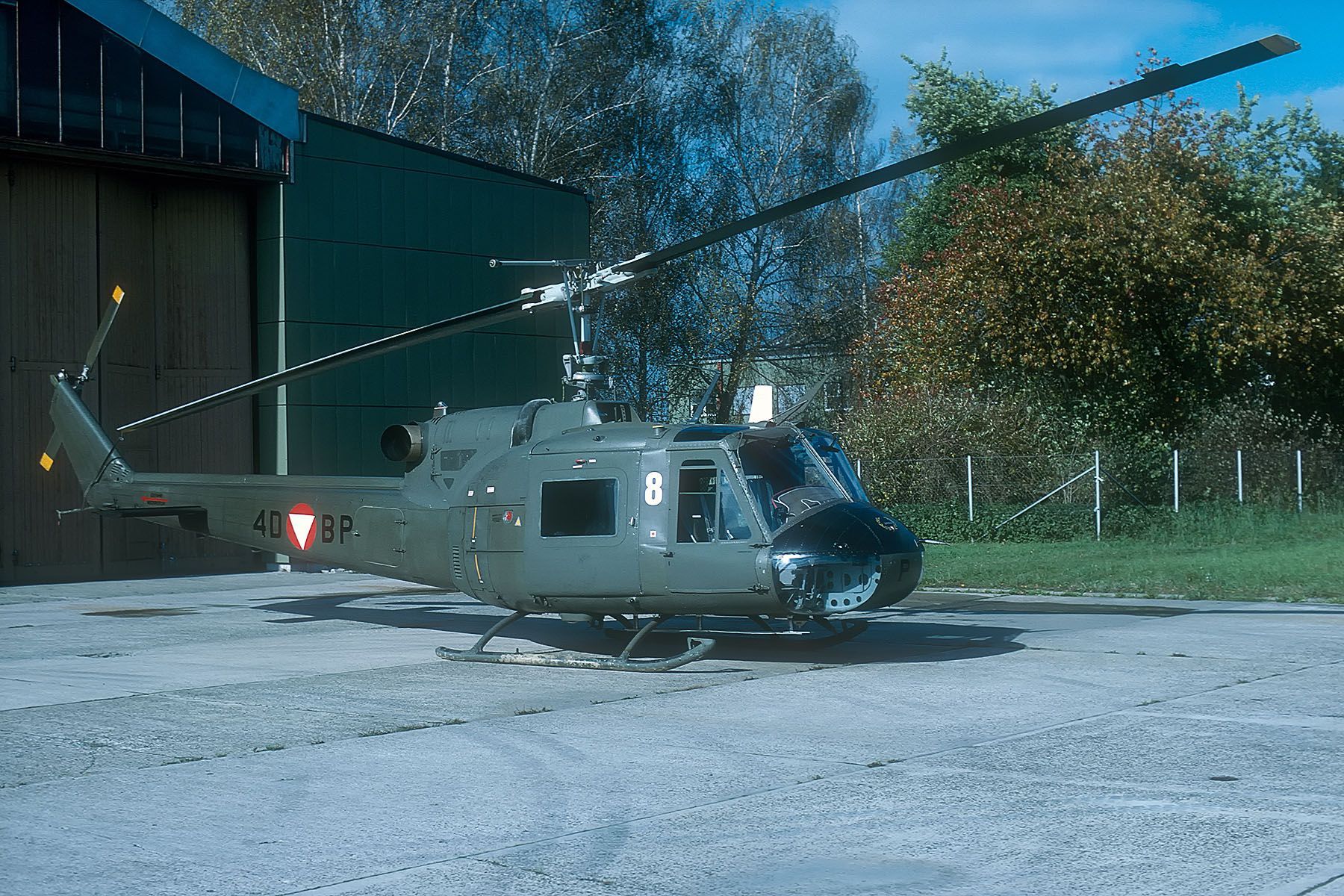
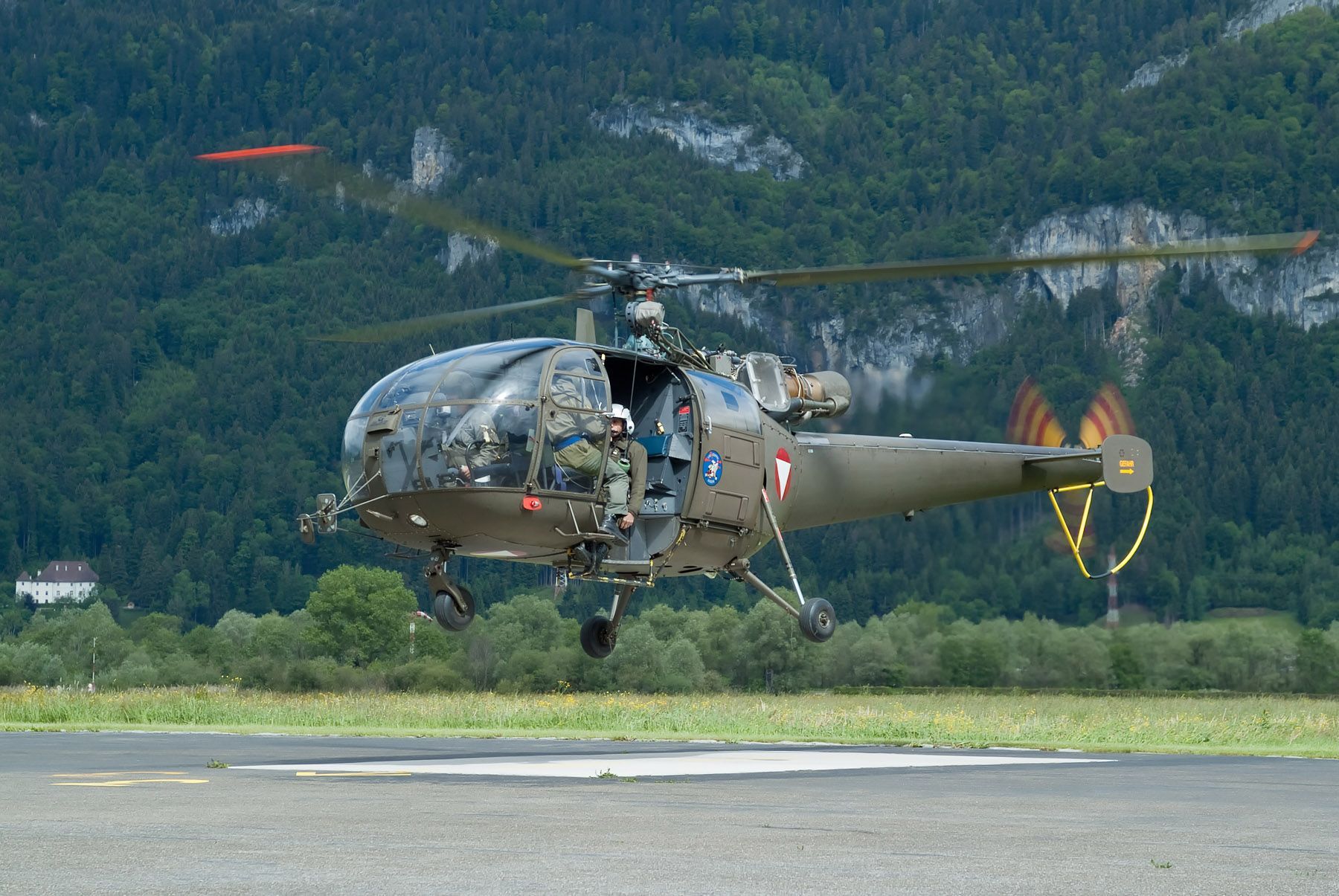
The Alouette III enjoyed a lengthly career with the Austrian armed forces. An initial series of 12 Sud-Est SE3160s arrived in 1967, later followed by 14 Sud Aviation SA316Bs. Two used airframes were bought from the Royal Jordanian Air Force in 1986. Finally, four Alouette IIIs were obtained from surplus Swiss air force stocks by the end of last century, of which one actually entered service while the other three were used for spares. The Alouettes mainly operated out of Aigen in Ennstal, but detachments near Klagenfurt and Innsbruck were maintained as well. The final Alouettes were retired in 2024 following the arrival of the first AW169B Lions. Close to 200.000 flying hours had been logged in almost 60 years of service.
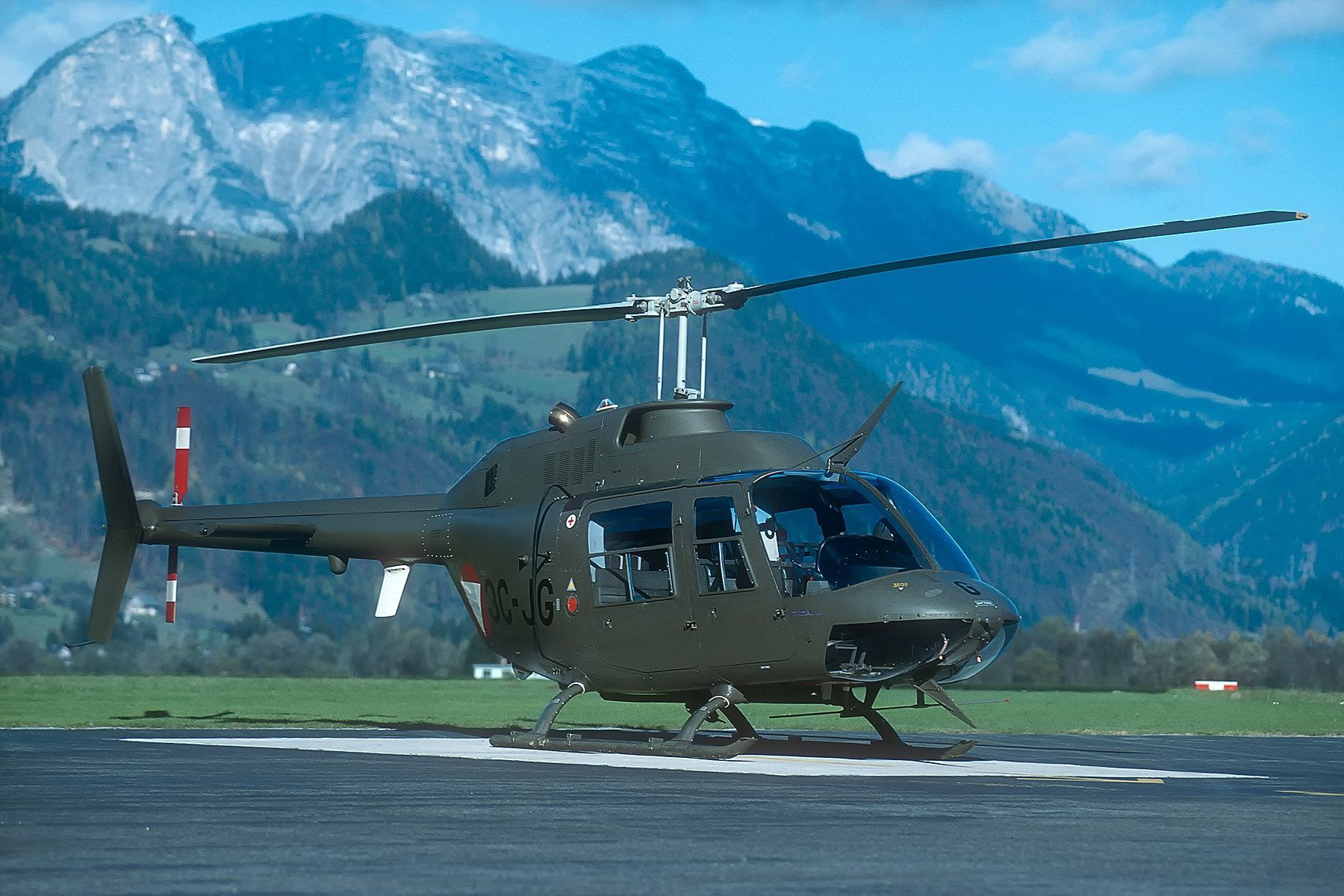
For rotary wing training, a dozen AB206A Jet Rangers were used from 1969. A 13th example was bought to replace one that crashed. The Jet Rangers were retired in 2009.
Possibly the oddest helicopters in service with the Austrian air force were a pair of Sikorsky S-65C-2, based on the CH-53D and locally designated S-65Ö. Their large capacity was really helpful for Alpine air rescue and evacuations, the main reason these were brought into service in 1970. However, the high operating costs of this tiny fleet prompted the air force to sell the large helicopters, and in 1981 the S-65s moved to Israel. ■